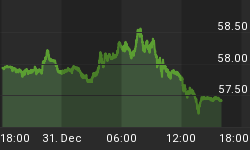Despite a brighter economic picture in the U.S., financial markets are still at risk of collapsing under the European sovereign debt crisis. Stocks are at crucial support lines, while the U.S. dollar could appreciate further against the European currency.
Buy America's momentum or sell Europe's incertitude? Traders remain caution, as good timing is important to ride the markets. Long-term cyclical studies anticipate further losses for the stock indexes. On the other hand, seasonal components support a rally in November and in December. In effect, the U.S. economy has grown 2.5% in the third quarter of 2011. Consumer spending and business investment stay healthy, while exports are positive, due to a weaker dollar. Foreclosure numbers reached the lowest levels since 2008. Finally, inflation is softening, along with the decline of gasoline prices. However, good news is undermined by the incertitude of the European sovereign's debt. In Italy, Mario Monti has gained the majority of the parliament. Now, a series of unpopular austerity measures have to be approved. Monti's large consensus could quickly shrink, along with the electorate approval, while Berlusconi is waiting for the right moment to get back on track.
Sell Europe, but for how long?
In reality, after Greece and Italy, another country will be under tight scrutiny. On Sunday is election-time in Spain. The Popular party of Mr. Rajoy is expected to replace the Socialist party of Mr. Zapatero. Like elsewhere in Europe, austerity and reforms are expected. The financial world is watching. For the first time in fourteen years, Spanish bond yields approached 7%. Borrowing costs will be under pressure again, if Madrid fails to reassure the financial community. The E.C.B could be forced to step-up its sovereign bond purchases. There is no other choice, at the moment. Nonetheless, the situation is not sustainable over the longer- term. E.C.B. essence is at risk. As a result, European governments will be asked to approve the new EFSF guarantees for the second consecutive time.
Europe should remain on the sell-side for now. The economic growth is fading away and the contraction is spreading into solid countries such as Germany, Holland and France. So, what is next? The euro could fall to 1.32/1.28 and only a swing above 1.4460 would lift the price to 1.48/1.52. Stock indexes are approaching important support lines as well. A move below the 50 days MA at 1186 could take the S&P 500 index to 1180 and possibly to 1140. A breakout over 1287 might instead support the price to 1297 and eventually to 1350. December is one of the best months for the stock indexes and for the euro currency.
















